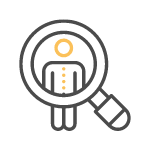
Breast Cancer Signs & Symptoms
Breast cancer is one of the most common cancers affecting women, but it can also impact men. Early detection plays a crucial role in effective treatment and improving survival rates. This blog aims to inform you about the signs and symptoms of breast cancer, empowering you to take charge of your health and seek medical advice when necessary.
Understanding Breast Cancer
What is Breast Cancer?
Breast cancer occurs when cells in the breast begin to grow uncontrollably, forming a tumor that can be benign (non-cancerous) or malignant (cancerous). There are several types of breast cancer, with invasive ductal carcinoma being the most prevalent.
Common Types of Breast Cancer
- Ductal Carcinoma In Situ (DCIS): Non-invasive, remains within the ducts.
- Invasive Ductal Carcinoma (IDC): Most common form, spreads beyond the ducts.
- Invasive Lobular Carcinoma: Begins in the lobules and can spread.
Key Signs and Symptoms
Physical Changes
Lumps or Masses
One of the most common signs of breast cancer is the discovery of a lump or mass in the breast. These lumps are often hard, irregular in shape, and painless, but not all lumps are cancerous. Regular self-examination can help you notice changes early. Check for lumps while standing in front of a mirror or lying down.
Change in Size or Shape
Any noticeable change in the size or shape of your breast should be evaluated. This can include swelling in one breast or a significant asymmetry between the two.
Skin Changes
Dimpling or Pulling of the Skin
Dimpling or pulling of the skin can indicate that cancer is affecting the tissue. If you notice areas of your breast that look “dimpled” or have an orange-peel texture, seek medical advice.
Redness or Irritation
Red or inflamed areas on the breast can be signs of infection or inflammatory breast cancer, which is a rare but aggressive form of the disease.
Nipple Change
While some nipple discharge can be normal, especially if it occurs during pregnancy or breastfeeding, any unexpected discharge—especially if it’s bloody or clear—should be evaluated by a healthcare professional.
Nipple Inversion or Changes in Position
If a previously protruding nipple becomes inverted or changes in position, this could signal underlying issues. Changes in the breast can affect the nipple’s appearance as well.
Pain or Discomfort
Persistent Pain
While many women experience breast tenderness related to their menstrual cycle, persistent or severe pain in the breast that doesn’t go away warrants further investigation.
Pain in the Armpit or Chest
Localized pain in the armpit or chest area can be a symptom of breast cancer. This can occur even if there are no visible changes in the breast.
When to See a Doctor
If you notice any of the signs or symptoms mentioned above, it’s essential to consult a healthcare provider. Regular screenings and mammograms can help detect breast cancer in its early stages, even before symptoms appear. Women should begin discussing screening options with their doctor at age 40 or earlier if they have a family history of breast cancer.
Myths and Misconceptions
There are many myths surrounding breast cancer signs and symptoms. For example, some people believe that only women with a family history of breast cancer need to worry about symptoms. In reality, breast cancer can affect anyone, regardless of family history.
Conclusion
Being aware of the signs and symptoms of breast cancer can lead to early detection, which significantly improves treatment outcomes. Regular self-exams, screenings, and consultations with healthcare professionals are key components of breast health.
Contact Us
Visiting Hours
OPEN 24 hours 7 days a week.
OPD Timings : Monday to Saturday
( 9:00 AM to 5:30 PM )
Appointments
Emergency
Visit the hospital
MGM Cancer Institute
No 119 & 121, Nelson Manickam Road, Raajeswari Street, Rajaram Mehta Nagar,
Aminjikarai, Chennai – 600029
At MGM Cancer Institute, we believe in curing the fear of cancer first. We understand that battling cancer is not just a physical fight, but a mental and emotional one as well. Our dedicated team is committed to providing exceptional healthcare that improves your overall well-being and eases the anxiety that comes with cancer. With a 150-bed facility in the heart of your city, we are here to support you every step of the way.
© MGM Cancer Institute. All Rights Reserved. Last updated on 20-01-2025.
















